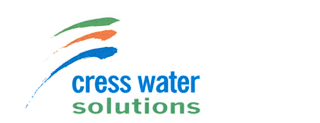Reed-Bed Maintenance
 All of our reed-bed and constructed wetland systems are supplied with Maintenance & Operation Instructions. These provide full information on how to keep your reed-bed system in good condition and performing optimally.
All of our reed-bed and constructed wetland systems are supplied with Maintenance & Operation Instructions. These provide full information on how to keep your reed-bed system in good condition and performing optimally.
Maintenance is simple and easy to carry out by anybody with a modicum of gardening experience. It is not arduous.
In the first few years, whilst the reed seedlings are colonising and establishing themselves across the surfaces of the beds there is plenty of scope for weeds such as nettles, thistles, brambles and various grasses to take hold. If left to themselves nettles and brambles will out-compete the reeds and completely take over. We recommend that in the first few years weeding is carried out during the growing season every two weeks or so. It is easy and simple to pull weeds out whist they are still small. And, pulling them out before they have a chance to go to seed reduces the amount of weeding that has to be done in the future. Nettles need to be pulled out before they have a chance to put down their extensive and deep root systems.
 At the end of the season after the first couple of years we always recommend that the reeds are cut back to leave a stubble about 25 mm in length and all the dead and cut plant material is raked off the surface of the beds to leave the top surface sand layer exposed. In this way the dead plant material is not left to rot and block the surface of the beds.
At the end of the season after the first couple of years we always recommend that the reeds are cut back to leave a stubble about 25 mm in length and all the dead and cut plant material is raked off the surface of the beds to leave the top surface sand layer exposed. In this way the dead plant material is not left to rot and block the surface of the beds.
The only other main maintenance requirement, if you have a septic/settlement tank fitted, or use a package mechanical sewage treatment plant, is to have this tank emptied or de-sludged at regular intervals. This could be once every 12 months, which is what is recommended, or every 2-3 years depending on what solids get flushed down the drainage system.
Cress Water Maintenance Service
We offer a maintenance service for those who, for one reason or another, would rather have someone else look after their reed-bed system. We can provide a 3-monthly, 4-monthly, 6-monthly and annual maintenance inspection and service. This involves checking that everything is working correctly, effluent is being distributed across the surfaces of the beds, pipes are free flowing, the surface sand layer is not blocked and weeds are being kept under control. We may carry out some weeding. Even when these visits are carried out the customer is still expected to undertake weeding and annual cutting of the reeds themselves or engage a local gardening company to do so. Recommendations for remedial actions will be provided.
We can also arrange for samples to be taken and analysed to check that the customers reed-bed system is performing as it should

